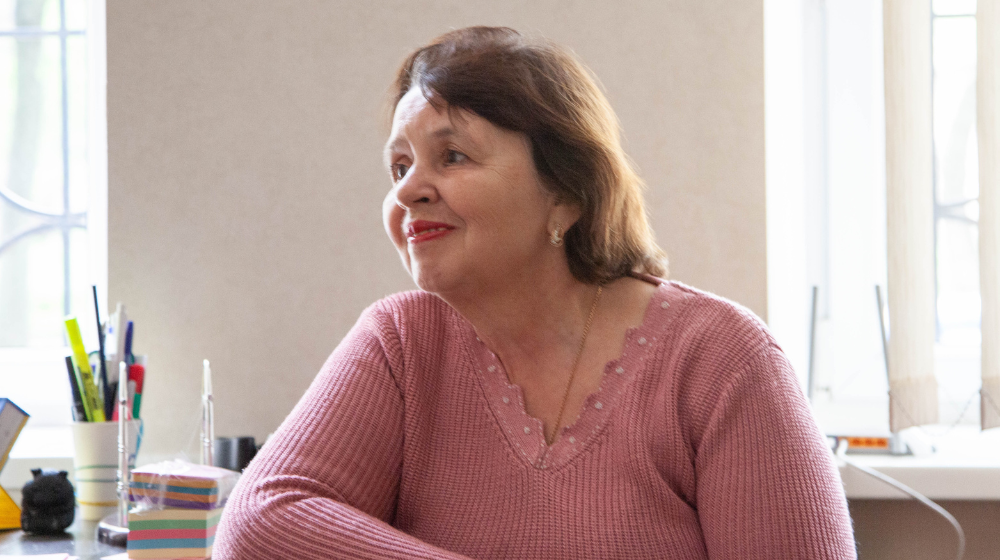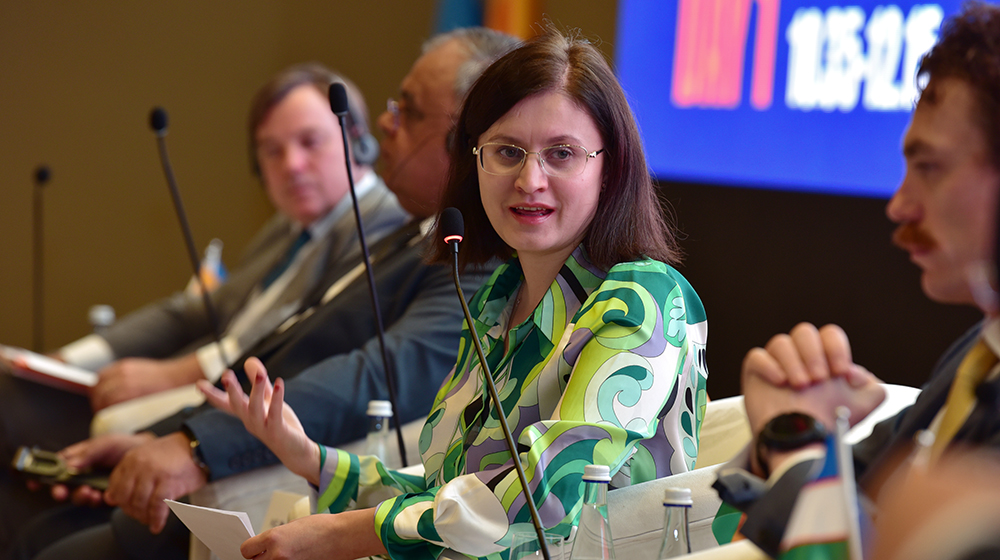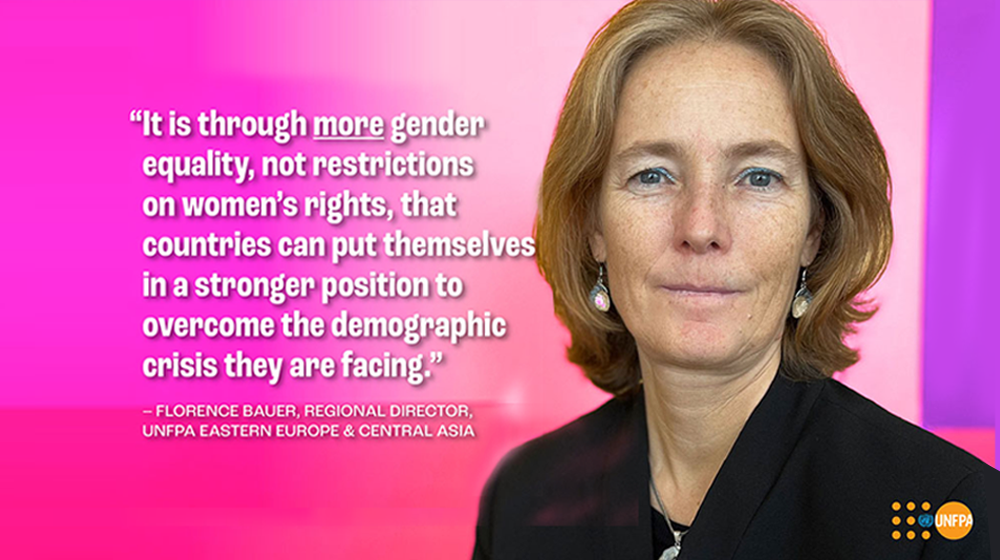
Iryna Harifulina, 62, is one of the 5.1 million Ukrainians who have been internally displaced by the war. She used to live in Kramatorsk, a city located in the eastern Donetsk region near the frontlines that has repeatedly been hit by air strikes. The fighting forced her to move hundreds of kilometres away to the city of Dnipro, where she found safety but felt like a stranger. "I arrived with only two bags, leaving behind all my friends and the life I knew,” she said. “It was incredibly difficult to leave my city at this age, it was a terrible feeling.” Women make up 58 per cent of Ukraine’s internally displaced population. And like Ms. Harifulina, many struggle to settle into their new environment where they must take on new roles and responsibilities. The United Nations Population Fund (UNFPA) created a project known as VONA Career Hubs to help women develop job skills and financial literacy. It initially focused on survivors of domestic and gender-based violence, but since the start of the war, it has been expanded to include women who are internally displaced and those from vulnerable populations or older age groups.
read more
Tashkent, 1 December 2023 - Through a strategic approach to policy-making, Uzbekistan and other countries in Central Asia can enhance their resilience and adaptability to demographic changes, turning challenges into opportunities for sustainable development, an international conference concluded. The conference, titled "Sustainable Development Amid Demographic Changes: National and International Practices," was organized by the Senate of Oliy Majlis of the Republic of Uzbekistan, the Scientific Research Institute of Family and Women, and UNFPA, the United Nations Population Fund, in partnership with several UN agencies, international financial institutions, private sector partners, and academia. “With the current age structure of the population, and a growing working-age population, Uzbekistan, like other countries in Central Asia, is in a prime position to reap the benefits of the demographic dividend,” said Florence Bauer, UNFPA Regional Director for Eastern Europe and Central Asia.
read more
Without significant improvements in gender equality, the countries of Eastern Europe are unlikely to overcome the demographic crisis they are facing, the United Nations Population Fund (UNFPA) Regional Office for Eastern Europe and Central Asia warned on today’s World Population Day. Decades of outmigration and low birthrates have left countries in Eastern Europe with declining and ageing populations. Efforts by governments to address the crisis by trying to boost birthrates have largely failed.
read more
If only women had more children, a widely held view goes, our demographic worries would fade away. Higher birth rates would stabilize population numbers, or even make them grow. Soon, the proportion of working-age people in employment would go up, easing concerns about how sustainable our social support and pension systems are. Eventually, increasing populations would drive economic growth and prosperity.
read more
Women and girls make up about half of the population in Eastern Europe and Central Asia. Yet their desires for their lives, families and careers are often ignored in discussions about the region’s demographic future. Worse, their rights as equal citizens, including their reproductive rights, are under threat, as anxieties around population decline have given rise to pro-natalist policies and narratives putting pressure on women to have more children.
read more